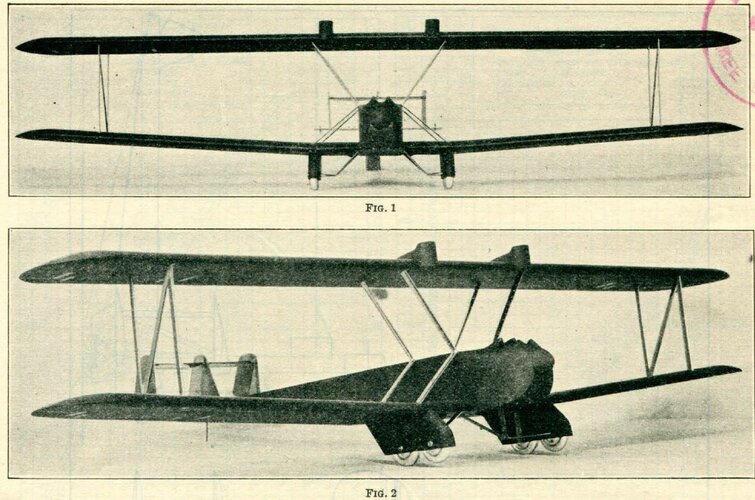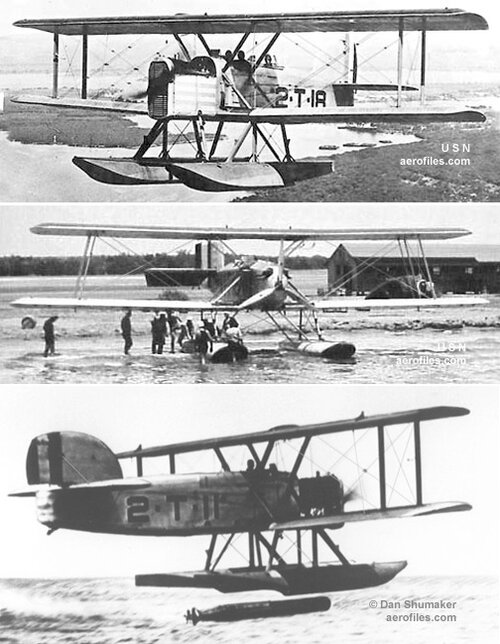The design may have been an aerodynamic study for what became the XHB-1 Experimental Heavy Bomber project, which was eventually awarded to Huff Daland and was known as the 'Cyclops.' The description of the New Long Distance Bomber is the same dimensions of the 1/40 wind tunnel model. The specification derived from this wind tunnel study appears to have been the basis of the proposal request from McCook.
Technical Bulletin No. 38 (Feb-Mar 1924)
"New Long Distance Bomber. The Engineering Division has initiated preliminary designs for a large night bombardment airplane utilizing a centralized power plant. The general design embodies a single-bay, externally-braced biplane with an exceptionally long fuselage and a semi-biplane tail. The proposed bomber will have a wing span of 133 feet, an overall length of 85 feet, and a wing area of 4,000 square feet, all of which make it larger dimensionally than the Barling Bomber. The centralized power plant will consist of four Liberty "12" engines driving a single 22-foot two-bladed propeller by means of a power transmission which permits the cutting-out of one or more engines as desired. ' The structural arrangement of the wing cellule and landing gear will be similar to that used on the Douglas World Cruiser which employs a large upper center section, lower wing stubs, and a wide-tread split-type landing gear. The chassis will consist of two units or trucks similar to those used on the Barling except that each truck will be equipped with two wheels instead of four, the rear wheel being rigidly attached to the "V" struts and provided with a brake and the front wheel suspended forward by radius ro.i;ls and connected with lower front wing spar by means of oil dash-pots to absorb shock~ The size of the wheels and tires will be 64x14 inches, the largest yet developed (see page 72). Side bracing will be furnished by diagonal struts to lower longerons. A crew of seven will be carried as follows: two pilots located aft of engine room; three gunners, two in upper wing turrets and one in tail, an engineer and a navigator. Al tho the aggregate horsepower will be 800 less than that of the Barling Bomber,· the new bomber will have much less parasite area and be capable of carrying the same bomb load with the same endurance."
Technical Bulletin No. 42 (First Quarter 1925)
"Bids Received for Heavy Bomber. During January (1925) the Army Air Service solicited bids under Circular Proposal E -2321 for a new type of heavy bombardment airplane to be built in accordance with specifications laid down by the Engineering Division and suggestions by the Training and War Plans Division. Ten aircraft manufacturers responded, the bids being opened on March 11, 1925, as follows : Atlantic Aircraft Corporation Kirkham Products Company C. Ward Hall, Incorporated. Eberhart Steel Products Company Cox-Klemin Aircraft Company Lawson Aircraft Company *Huff, Daland & Company, Inc. G. Elias & Bro., Incorporated, The Douglas Company, Thomas-Morse Aircraft Company."
Technical Bulletin No. 43 (Second Quarter 1925)
"The design competition for a heavy bombardment airplane, held by the Army Air Service at McCook Field on March 11 , 1925, resulted in the selection of a design submitted by Huff, Daland & Company, Inc., Ogdensburg, N . Y., one of the participating firms. Immediately following the award, an experimental contract was placed with this firm for the development of a heavy bomber in accordance with the selected design, to be designated Model XHB-1."


 content.lib.auburn.edu
content.lib.auburn.edu





